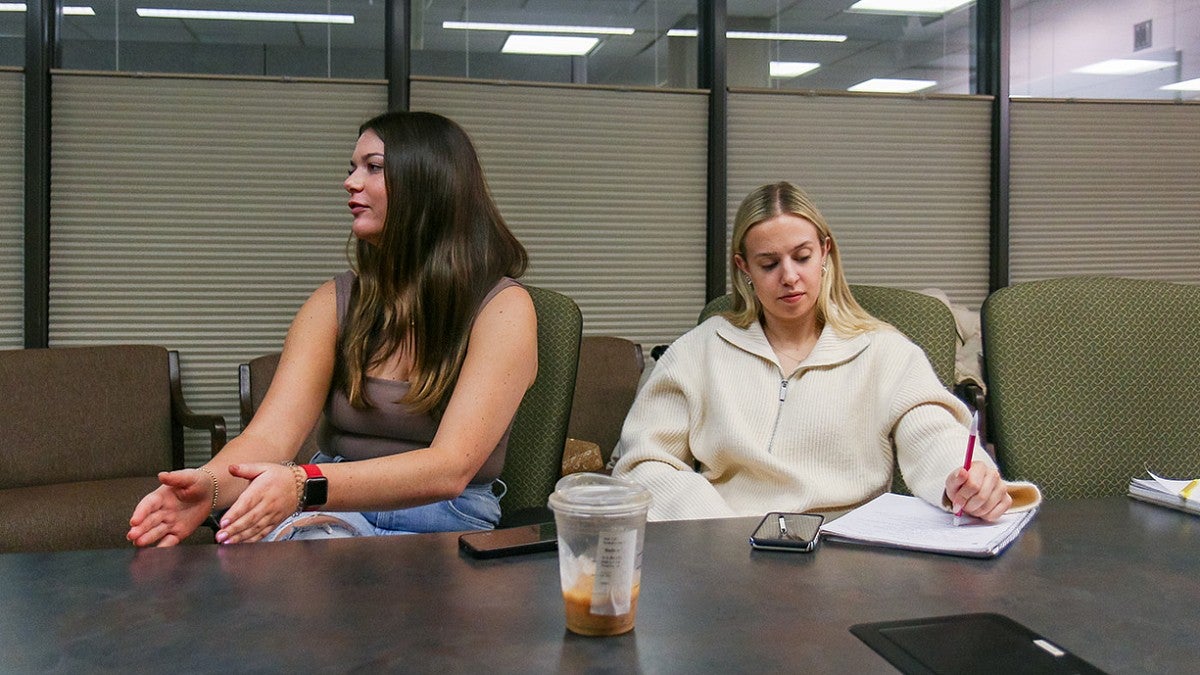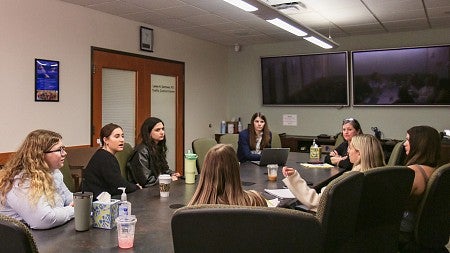
As a UO School of Journalism and Communication (SOJC) public relations student preparing to graduate and enter the workforce, I had one final step to take before I received my diploma at the end of this term: Take Public Relations Campaigns.
In this course, students are paired with a real organization, conduct research, build client relations and develop strategies and tactics, before pitching their final ideas to the organization at the end of the class. I was excited to take this course, as I knew it would give me real-life experience and help prepare me for my first job, post-grad.
I am taking this course with SOJC Professor of Practice Atilla Schillinger, and my client is the city of Salem, which is working with the Sustainable City Year Program to increase the number of households switching to heat pumps from less efficient energy sources. I chose this project over two other clients because I was drawn to the possibility of using public relations for good.
Students lead campaign for city of Salem
Our team began by setting up a meeting with several city council members so we could learn exactly what our clients wanted from us. Their goals were simple: They wanted to increase the installation of heat pumps, an energy-efficient heating and cooling system, in Salem. Next, we began researching Salem’s demographics, analyzing state and national energy trends, learning the mechanics of heat pumps and interviewing early adopters to create a client brief.
As we began to familiarize ourselves with our client and the campaign, we found that there were two benefits to emphasize with people considering the switch to heat pumps: lower utility bills and fewer environmental impacts.
We used these findings to create our strategy, a storytelling community approach that used simple language and emphasized peer-to-peer communication. We sent our ideas to the city of Salem, adjusted our strategy according to client feedback and got to work on the tactics, otherwise known as the deliverables.
Our team wanted to think outside the box for tactics and go beyond social media posts. We came up with several ideas, including an interactive heat pump tabling experience that would allow residents to learn about heat pumps in person though peers, a summit for landlords that focuses on the potential future savings and a plan to distribute yard signs to residents advertising that the house uses a heat pump to foster conversations between neighbors.

Hands-on web design work will bolster portfolio
I wanted to focus on the peer-to-peer communication aspect, so I mocked up a website that would be a hub where Salem residents could find all the information they would need about heat pumps. While I had done some website design before, this class allowed me to create hands-on work that I can use in my portfolio as I was creating real communication materials for an organization.
In addition to the client work, Professor Schillinger invited professionals from the communication industry to speak to us each week and provide advice and feedback on our ideas. One speaker talked about the importance of making an event sound exclusive, and we used that information to guide our mock-ups of invitations to the heat pump summit.
Meeting these professionals also offered the opportunity to network, and several of these professionals shared information about internships.
Around Week 7 of the term, our team completed a first draft of our research, strategy and tactics. We made a site visit to Salem, where we walked city council members through our presentation, learning what they liked and where we needed to make adjustments. This trip allowed us to expand on our professional development by forging relationships with city government officials as public relations professionals.
The experience broadened my knowledge of the communications industry and taught me many things I hadn’t considered before, such as how a city can’t sponsor individual companies because they legally can’t show favoritism.
Class offered preparation for future PR job
In Week 9, we took our pitch deck with our research, strategy and mockups, and presented the campaign to the city of Salem. While we were all very nervous to pitch to an actual client, we had practiced several times and the presentation flowed smoothly. At the end, our client asked us several questions, allowing us to expand on our work and respond to feedback.
Now, in our final week of classes, all students are preparing a portfolio slide deck that they must present to faculty and professionals for a portfolio review. The portfolio focuses on all the work we have accomplished in our time at the SOJC, and gives students the experience of pitching themselves to a company.
Throughout this class, I’ve gained valuable insight about being a professional in the public relations industry, from working with teams to creating sustainable campaigns and working with a government organization. I feel more prepared than ever to enter the industry, and I am glad I’m getting real-world experiences to guide me.
—Ella Norton, public relations ’24
Ella Norton (she/her/hers) is a third-year student majoring in public relations and French from Kansas City, Missouri. She is a copy editor for Align Magazine, an account executive for Allen Hall Public Relations and an ambassador for the SOJC.
